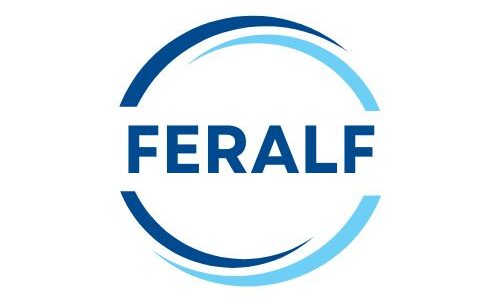Educational institutions face mounting pressure to deliver engaging, effective learning experiences while managing tight budgets and evolving student expectations. Instructional technology services have emerged as the bridge between traditional teaching methods and the digital future of education.
These specialized services encompass everything from learning management system implementation to virtual reality training programs. They’re designed to help educators leverage technology not just for technology’s sake, but to genuinely improve learning outcomes and streamline educational processes.
Whether you’re a K-12 administrator exploring new teaching tools or a corporate training manager seeking to modernize your programs, understanding instructional technology services can transform how your organization approaches learning and development.
What Are Instructional Technology Services?
Instructional technology services combine educational expertise with technical implementation to create more effective learning environments. These services go beyond simply installing software or hardware—they focus on integrating technology in ways that enhance pedagogy and improve student engagement.
The scope typically includes learning management system design, multimedia content creation, assessment tool development, and ongoing technical support. Service providers work closely with educators to understand their specific teaching goals and then recommend appropriate technological solutions.
Modern instructional technology services also address accessibility requirements, ensuring that digital learning tools work for students with diverse needs and learning styles. This comprehensive approach helps institutions create inclusive learning environments that serve all learners effectively.
Core Components of Instructional Technology Services
Learning Management System Support
Learning management systems serve as the backbone of modern digital education. Instructional technology services help institutions select, customize, and maintain these platforms to match their specific educational objectives.
Professional service providers assist with course design, user training, and system integration. They ensure that LMS platforms connect seamlessly with existing institutional systems like student information databases and grade books.
Ongoing support includes troubleshooting technical issues, updating course templates, and providing faculty training on new features. This comprehensive approach maximizes the return on LMS investments while minimizing disruption to teaching activities.
Multimedia Content Development
Educational content creation has evolved far beyond simple presentations and documents. Today’s instructional technology services include video production, interactive simulations, and immersive learning experiences.
Service providers work with subject matter experts to transform traditional curriculum materials into engaging digital formats. This might involve creating animated explanations of complex concepts, developing virtual lab experiences, or producing podcast series for mobile learning.
Quality multimedia content requires both technical skills and educational expertise. Professional services bring together instructional designers, graphic artists, and technology specialists to create materials that truly enhance learning rather than simply digitizing existing content.
Assessment and Analytics Tools
Modern educational technology generates vast amounts of data about student learning patterns and performance. Instructional technology services help institutions harness this information to improve educational outcomes.
Assessment tools can range from simple online quizzes to sophisticated adaptive testing systems that adjust difficulty based on student responses. Analytics platforms help educators identify at-risk students early and provide targeted interventions.
Data visualization dashboards make complex learning analytics accessible to teachers and administrators who may not have extensive technical backgrounds. These tools transform raw data into actionable insights that drive educational improvements.
Technical Support and Training
Even the most sophisticated educational technology is only as effective as the people using it. Comprehensive instructional technology services include ongoing support and professional development for educators.
Training programs help faculty members develop both technical skills and pedagogical approaches for integrating technology into their teaching. This dual focus ensures that technology enhances rather than complicates the educational process.
Technical support services provide rapid response to system issues that could disrupt learning activities. Many providers offer 24/7 support during critical periods like exam weeks or course launches.
Benefits for Educational Institutions
Enhanced Student Engagement
Interactive technologies capture student attention in ways that traditional lectures often cannot. Virtual reality field trips, gamified learning modules, and collaborative online projects create memorable learning experiences that stick with students long after the class ends.
Multimedia presentations cater to different learning styles, helping visual learners grasp concepts through infographics while supporting auditory learners with podcast content. This multi-modal approach increases the likelihood that all students will connect with the material.
Real-time polling and discussion tools encourage participation from students who might remain silent in traditional classroom settings. These technologies create more inclusive learning environments where every voice can be heard.
Improved Learning Outcomes
Research consistently shows that well-implemented educational technology can improve student performance and retention rates. Adaptive learning systems provide personalized instruction that meets each student at their current level of understanding.
Immediate feedback through online assessments helps students identify knowledge gaps quickly rather than discovering problems only during major exams. This rapid feedback loop accelerates the learning process and reduces frustration.
Data analytics help educators identify which teaching methods and materials are most effective, allowing for continuous improvement of educational programs based on actual student performance data.
Operational Efficiency
Automated grading systems free up faculty time for more valuable activities like providing personalized feedback and mentoring students. Digital submission systems eliminate the chaos of managing paper assignments and reduce the risk of lost work.
Centralized learning management systems streamline course administration, making it easier to distribute materials, communicate with students, and track progress across multiple sections or courses.
Resource sharing capabilities reduce duplication of effort as educators can easily adapt and reuse digital materials created by colleagues, building institutional knowledge bases that benefit everyone.
Choosing the Right Service Provider
Assessing Your Institution’s Needs
Before selecting an instructional technology service provider, conduct a thorough assessment of your current technology infrastructure and educational goals. Identify specific pain points that technology could address and establish clear success metrics.
Consider your institution’s technical capacity and budget constraints. Some organizations need comprehensive managed services, while others prefer consulting support for internally managed projects.
Survey faculty and students to understand their current technology experiences and preferences. This input helps ensure that new systems will be adopted enthusiastically rather than resisted as unwelcome changes.
Evaluating Provider Expertise
Look for service providers who demonstrate both technical competence and educational expertise. The best instructional technology services combine deep understanding of learning principles with practical experience implementing complex systems.
Request case studies and references from similar institutions. Educational environments have unique requirements that differ significantly from corporate technology projects, so relevant experience matters greatly.
Evaluate the provider’s approach to training and ongoing support. Technology implementation is just the beginning—long-term success depends on comprehensive user support and continuous system optimization.
Implementation and Support Considerations
Successful technology integration requires careful planning and phased implementation to minimize disruption to ongoing educational activities. Choose providers who demonstrate experience managing complex rollouts in academic environments.
Consider the total cost of ownership, including ongoing licensing fees, support costs, and upgrade expenses. The lowest initial price may not represent the best long-term value if hidden costs emerge later.
Ensure that proposed solutions can integrate with your existing systems and scale to accommodate future growth. Educational institutions often experience significant changes in enrollment and program offerings that technology systems must accommodate.
Transforming Education Through Technology
Instructional technology services represent more than just a trend—they’re a fundamental shift toward more effective, accessible, and engaging education. Organizations that embrace these services thoughtfully can create learning environments that truly prepare students for success in an increasingly digital world.
The key lies not in adopting every new technology that emerges, but in selecting tools and services that align with clear educational objectives. When technology serves pedagogy rather than driving it, the results can be transformational for both educators and learners.
Start by identifying your most pressing educational challenges, then explore how instructional technology services might address them. Whether you begin with a simple learning management system upgrade or embark on a comprehensive digital transformation, the journey toward more effective education technology starts with a single step.











